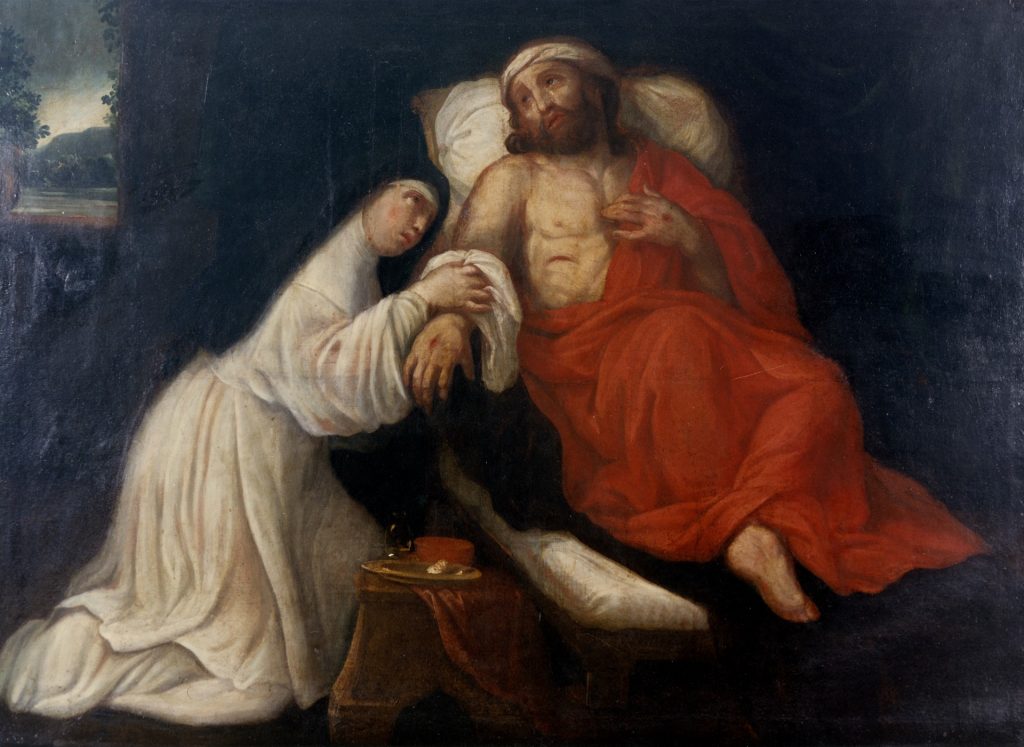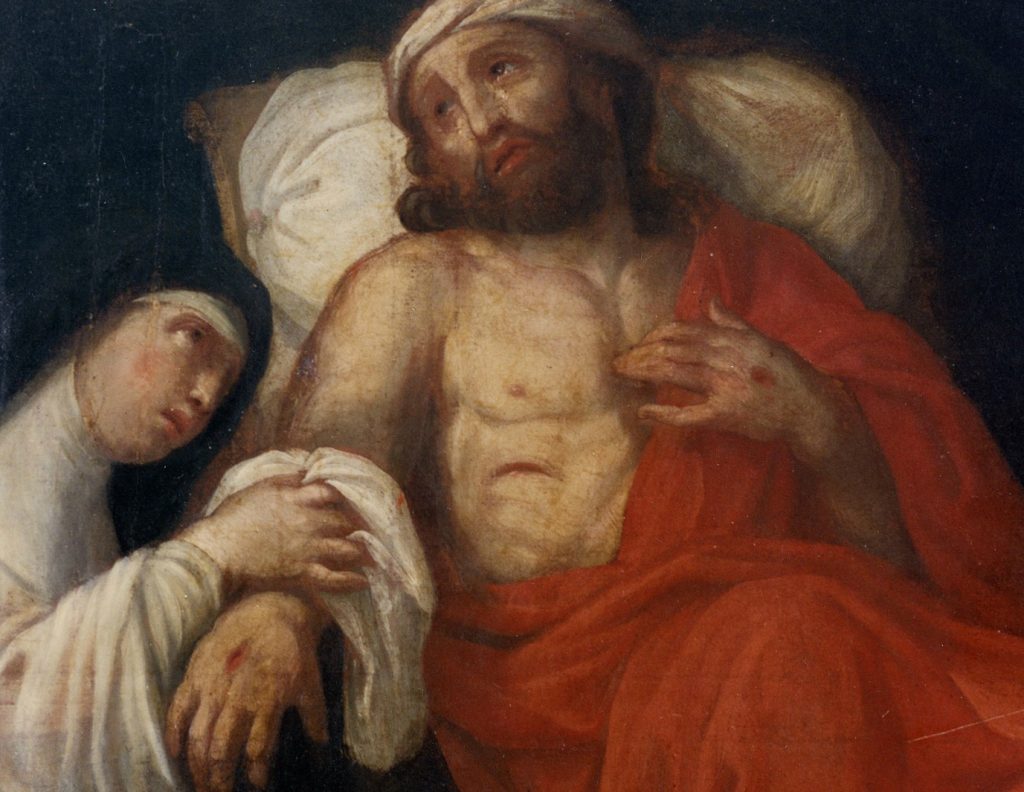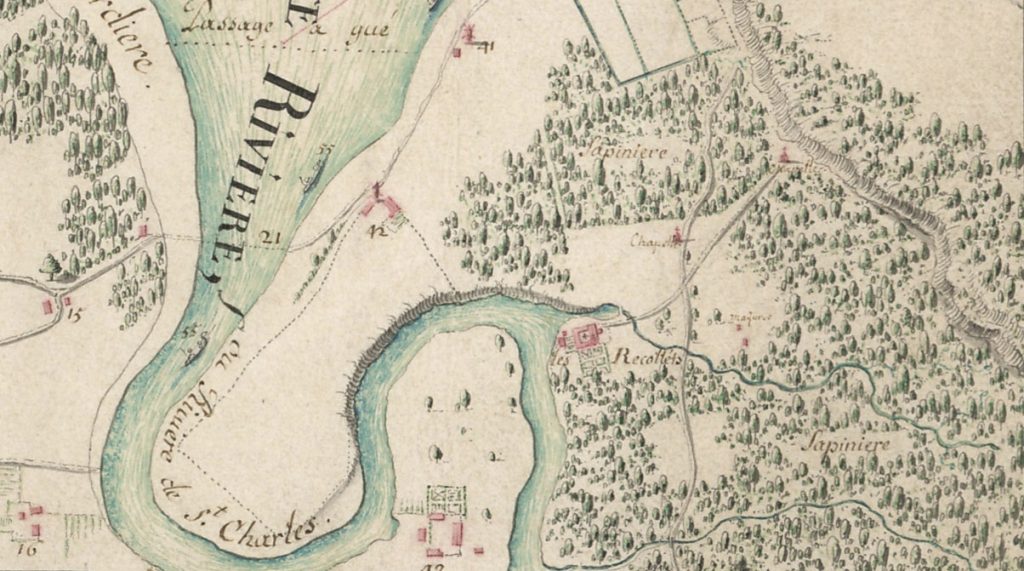A painter of importance: Frère Luc
Art lovers may be surprised to learn that there are works by famous painters in the Monastère des Augustines’ collection. One of these painters was Claude François, better known as Frère Luc (1614-1685). Let’s see in detail one of his works that can be discovered as part of the thematic visit Fine Arts at Le Monastère des Augustines, and see why Frère Luc is an important figure in Quebec art history.

© Collections du Monastère des Augustines
An Important Portrait for the Augustinian Sisters
One of the most important paintings in the Museum is undoubtedly this oil on canvas by Frère Luc, called Hospitaller Sister Nursing Our Lord, Represented As a Patient[1]. It dates back to 1670. It was saved during the fire that destroyed the Hôtel-Dieu de Québec monastery in 1755.
There is an Augustinian hospitaller looking over a patient whom she is dressing; this sick man is Christ. The scene depicts Jesus after descending from the cross after being crucified, with wounds on his hands and feet, and another on his ribs.

© Collections du Monastère des Augustines
In the foreground, a plate, a glass of water, a sponge and a sandstone jar sit on a pedestal table. Through the open window in the background you can see a tree-covered mountain and a beach. This element of nature was probably inspired by the Saint-Charles River, since the Récollets monastery was located nearby, where the Hôpital général de Québec is now.
The scene illustrated in this work is not trivial for the Augustinian Sisters. In fact, it evokes a central theological element; their mission was based on the idea that they serve Jesus Christ through the sick people.

© Collections du Monastère des Augustines
A Recollect Painter Visiting Québec
Claude François was trained to paint well before entering the Recollects Order, where he took the religious name of Frère Luc. In 1632, likely already a skilled drawer and painter, he visited the Paris studio of painter Simon Vouet, then he went to Rome to perfect his knowledge. He also acquired the title of “Painter of the King” for his decorative work in the Louvre (1640-1642). In 1644, Claude François entered religion with the Recollects. Note that his religious name fit his “artistic vocation” very well, since Saint Luc is the patron of painters.
From August 1670 to October 1671, Frère Luc made a stay in Québec. This made him the first fine arts painter to work in New France. From then on, we better understand his importance in the history of Quebec and Canadian art. During his brief 14-month stay, Frère Luc was commissioned for several works by religious communities. Among these, the Augustinian and the Ursuline communities. Frère Luc also decorated several churches in the colony.
The painter’s training and the variety of themes he painted are an asset to the quality of the commissioned works he produced. Art historians have attributed a very large number of works to him, but it is unlikely that he could have painted them all during his stay in Quebec. It is plausible that he took some canvases with him from France. We also know that he was still commissioned after his departure and painted them in his Paris studio.

«Plan de Quebec en la Nouvelle-France assiégé par les Anglois», 1690.
© Archives nationales d’outre-mer, FR ANOM 03DFC354C.
***
To learn more about fine arts at Le Monastère des Augustines, participate in one of the guided tours dedicated to this fascinating world. Check the guided tours schedule here.
[1] Hospitalière soignant le seigneur dans la personne d’un malade.

